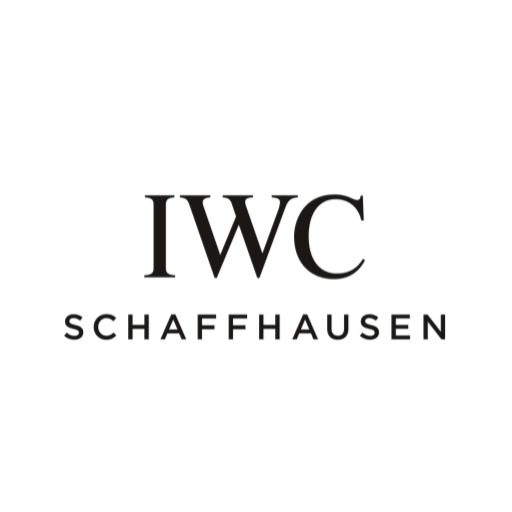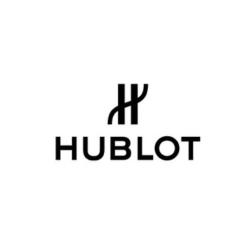Selling Guide
TAG Heuer vs Omega
Luxury watch brands are synonymous with precision, craftsmanship, and status. Notable brands include Rolex, Patek Philippe, Audemars Piguet, and more. Comparing Tag Heuer and Omega is crucial due to their similar market positioning, renowned heritage, and distinct features. This blog aims to help readers make informed decisions by examining the strengths, innovations, and iconic models of both brands, ensuring they choose a timepiece that aligns with their preferences and lifestyle.
Brand History and Reputation
Tag Heuer:
Founded in 1860 by Edouard Heuer in Switzerland, Tag Heuer has a rich heritage in precision timekeeping. Renowned for innovation, they introduced the first stopwatch accurate to 1/100th of a second in 1916. Tag Heuer’s commitment to sports timekeeping and partnerships with iconic events like the Olympic Games solidify its legacy. Today, the brand is recognized for its avant-garde designs and precision engineering.
Omega:
Established in 1848 by Louis Brandt in Switzerland, Omega has a longstanding history in horology. Known for producing the world’s first industrially-produced caliber in 1894, Omega has been a pioneer in watchmaking. Their Speedmaster became the first watch on the moon in 1969. Omega’s contributions extend to precision and durability, earning them a reputation as one of the top Swiss watchmakers.
Contributions to Watchmaking:
Both Tag Heuer and Omega have made significant contributions to the watchmaking industry. Tag Heuer’s focus on chronographs and precision culminated in innovations like the Micrograph, while Omega’s advancements include the Co-Axial escapement, enhancing accuracy and reducing friction.
Current Reputation:
Tag Heuer is celebrated for its modern, sporty designs, often associated with motorsports and endorsed by prominent figures in the sports and entertainment world. Omega, part of the Swatch Group, is globally recognized for its timeless elegance and technological advancements, continuing its role as the official timekeeper of major events like the Olympics.
In the industry, both brands maintain a strong presence, each appealing to distinct audiences with a blend of heritage, innovation, and design prowess.
Design and Aesthetics
Tag Heuer:
Tag Heuer is known for its avant-garde and sporty designs. Signature elements include bold, angular cases, distinct bezels, and often, intricate dial textures. The Carrera collection exemplifies classic racing aesthetics, while the Monaco line, notably associated with Steve McQueen, boasts a square case for a unique look. Tag Heuer’s commitment to innovation is mirrored in their contemporary designs, attracting those who appreciate a dynamic and modern aesthetic.
Omega:
Omega embraces a versatile range of designs, balancing elegance with innovation. The Seamaster, with its maritime influence, offers a sporty yet refined appearance, while the Speedmaster line, known for its lunar heritage, exudes a timeless and robust feel. The Constellation collection showcases Omega’s commitment to luxury and sophistication. The brand’s attention to detail and diverse styles caters to a broad spectrum of tastes.
Comparison of Collections and Styles:
- Tag Heuer Carrera vs. Omega Speedmaster: Both embody a racing spirit, but Carrera leans towards a sleek, contemporary look, while Speedmaster carries a more heritage-driven aesthetic.
- Tag Heuer Monaco vs. Omega Seamaster: Monaco stands out with its square case and vintage appeal, whereas Seamaster offers a more versatile, water-resistant design suited for various occasions.
Aesthetics and Personal Taste:
Individual preferences play a crucial role. Tag Heuer appeals to those seeking a bold, modern statement, often attracting sports enthusiasts and individuals with an inclination towards dynamic designs. Omega, on the other hand, caters to a broader audience with its diverse range, attracting those who appreciate both classic and contemporary aesthetics, along with a touch of historical significance. Ultimately, personal taste and lifestyle preferences guide the choice between Tag Heuer and Omega.
Technology and Innovation
Tag Heuer:
Tag Heuer has been at the forefront of technological advancements in watchmaking. Notable innovations include the Micrograph, the first stopwatch accurate to 1/100th of a second in 1916. In recent years, Tag Heuer has embraced smartwatch technology, introducing the Connected series, blending traditional craftsmanship with modern functionality. This move showcases their commitment to staying ahead in the tech-driven era of horology.
Omega:
Omega has a history of pioneering technologies. The Co-Axial escapement, introduced in 1999, is a notable innovation that enhances precision and reduces friction. Omega’s Master Chronometer certification ensures high levels of accuracy and resistance to magnetic fields. The brand continues to invest in cutting-edge materials, like Sedna gold and Liquidmetal, to improve durability and performance.
Comparison of Technical Features:
- Tag Heuer’s Connected vs. Omega’s Globemaster: Tag Heuer’s Connected series leverages smartwatch technology, offering features beyond traditional timekeeping. In contrast, Omega’s Globemaster emphasizes precision with the Master Chronometer certification, ensuring exceptional accuracy and reliability.
- Tag Heuer’s Micrograph vs. Omega’s Co-Axial Escapement: Both brands have made significant contributions to escapement technology. Tag Heuer’s Micrograph focuses on extreme precision in timekeeping, while Omega’s Co-Axial escapement addresses long-term accuracy and reduced friction.
Impact of Technology on Watch Experience:
Advancements in technology have elevated the overall watch experience. Tag Heuer’s integration of smartwatch features caters to a tech-savvy audience, providing functionalities beyond traditional timekeeping. Omega’s innovations enhance the reliability and longevity of mechanical watches, ensuring consistent performance. The impact is a harmonious blend of tradition and modernity, catering to diverse preferences in the ever-evolving world of horology.
Performance and Craftsmanship
Tag Heuer:
Tag Heuer is synonymous with precision and quality craftsmanship. The brand consistently utilizes high-quality materials in their timepieces, such as stainless steel, ceramic, and sapphire crystals. Tag Heuer’s commitment to accuracy is evident in their movements, incorporating Swiss-made automatic and quartz movements. The craftsmanship is notable, especially in their intricate dials and robust cases, reflecting a dedication to both performance and aesthetics.
Omega:
Omega has a long-standing reputation for producing high-precision timepieces. The brand is renowned for its in-house movements, including the Co-Axial escapement, which enhances accuracy and reduces friction. Omega extensively employs materials like Sedna gold, ceramics, and innovative alloys such as Liquidmetal. The craftsmanship is evident in details like the finishing of movements and the overall design, showcasing a commitment to excellence.
Examination of Movements, Materials, and Craftsmanship:
- Tag Heuer’s Calibre Series vs. Omega’s Co-Axial Movements: Both brands excel in movement technology. Tag Heuer’s Calibre series includes both automatic and quartz movements, providing options for different preferences. Omega’s Co-Axial movements, known for their precision and reduced friction, reflect a commitment to cutting-edge horology.
- Tag Heuer’s Materials vs. Omega’s Innovations: Tag Heuer often uses materials like titanium and carbon fiber for lightweight durability, while Omega’s focus on Sedna gold and Liquidmetal showcases a blend of luxury and resilience.
Longevity and Durability:
Both Tag Heuer and Omega are known for producing durable timepieces. Regular maintenance ensures longevity, but the quality of materials and craftsmanship contributes significantly to the overall durability. With proper care, watches from both brands have the potential to withstand the test of time, making them worthy investments for watch enthusiasts.
Price and Value Proposition
Tag Heuer:
Tag Heuer offers a diverse range of watches with varying price points. Entry-level models typically start around $1,000, while high-end or limited-edition pieces can exceed $10,000. The brand positions itself as a more accessible luxury option, making it appealing to a broader market.
Omega:
Omega, with a broader range, encompasses both mid-range and high-end pricing. Entry-level models can start around $2,000, while flagship models or special editions can surpass $20,000. Omega’s reputation for precision and craftsmanship contributes to its premium pricing within the luxury watch market.
Comparison of Value for Money:
- Tag Heuer Carrera vs. Omega Seamaster: In the mid-range segment, the Tag Heuer Carrera offers a compelling blend of style and performance, while the Omega Seamaster provides advanced technology and durability. The value proposition depends on the buyer’s preferences and priorities.
- Tag Heuer Monaco vs. Omega Speedmaster: At higher price points, the Tag Heuer Monaco’s unique design and heritage compete with the Omega Speedmaster’s historical significance and advanced features. The value for money is subjective and tied to individual preferences.
Factors to Consider for Value Evaluation:
- Brand Heritage: Consider the brand’s history and legacy in watchmaking.
- Materials and Craftsmanship: Assess the quality of materials, precision in craftsmanship, and finishing details.
- Technological Innovations: Evaluate the incorporation of advanced movements, escapements, and other technical features.
- Design and Aesthetics: Personal preference plays a significant role; choose a watch that resonates with your style.
- Limited Editions and Rarity: Limited-edition releases or rare models can contribute to the perceived value.
- Resale Value: Some brands hold their value better in the secondary market, which is crucial for those considering the watch as an investment.
Ultimately, the value of a luxury watch is subjective and varies based on personal preferences, brand loyalty, and the specific features that align with an individual’s needs and style.
Popularity and Celebrity Endorsements
Tag Heuer:
Tag Heuer strategically collaborates with various industries and sports events, emphasizing its dynamic and modern image. Notable partnerships include the Formula 1 racing series and collaborations with actors like Chris Hemsworth. Tag Heuer’s ambassadors, such as Leonardo DiCaprio and Cara Delevingne, contribute to the brand’s global visibility and appeal, especially in the realms of sports and entertainment.
Omega:
Omega has a strong presence in both sports and film industries. The brand is renowned for its association with the Olympic Games and the James Bond franchise. Omega’s celebrity endorsements include figures like George Clooney and Nicole Kidman. These collaborations reinforce Omega’s timeless and sophisticated image, aligning with its diverse range of timepieces.
Influence of Brand Popularity:
Popularity plays a crucial role in shaping consumer perceptions. A brand’s popularity often translates to a sense of trust, reliability, and desirability. Both Tag Heuer and Omega leverage their popularity to establish a strong market presence, appealing to different audiences with their distinct brand images.
Impact of Celebrity Endorsements:
Celebrity endorsements contribute significantly to a brand’s image and market positioning. They create associations between the brand and the celebrity’s persona, influencing consumer perceptions. For Tag Heuer and Omega, having ambassadors from the worlds of sports, entertainment, and fashion enhances their visibility and attractiveness to a broader audience. The perceived lifestyle and values of these ambassadors often align with the brand’s identity, reinforcing the overall image and desirability of their timepieces.
In the competitive luxury watch market, brand popularity and celebrity endorsements serve as powerful tools to create a compelling narrative and connect with consumers on an emotional level, ultimately influencing purchasing decisions.
Key Points of Comparison:
- Tag Heuer: Dynamic and modern, with a focus on sports and innovation. Offers a diverse range at more accessible price points.
- Omega: Timeless and sophisticated, renowned for precision and historical significance. A broader range, including high-end and limited editions.
Personal Preference:
The choice between Tag Heuer and Omega ultimately hinges on personal preferences. If you lean towards a modern, sporty aesthetic with a tech-forward approach, Tag Heuer might be your ideal choice. On the other hand, if you appreciate timeless elegance, historical significance, and a diverse range that includes both classic and contemporary styles, Omega could be more appealing.
Encouragement to Explore:
Both brands boast exceptional craftsmanship, technological innovations, and collaborations with renowned figures. Explore the collections, consider your lifestyle, preferences, and the occasions you plan to wear the watch. Testimonials and experiences from other watch enthusiasts can provide valuable insights.
Closing Remarks and Call to Action:
In the world of luxury watches, the choice between Tag Heuer and Omega is a matter of personal taste. Take the time to explore both brands, visit authorized dealers, and try on different models. Your watch is a reflection of your style and personality, so make an informed decision that resonates with you. Share your journey with other enthusiasts, and remember, the perfect watch is the one that brings you joy and satisfaction. Happy exploring!





